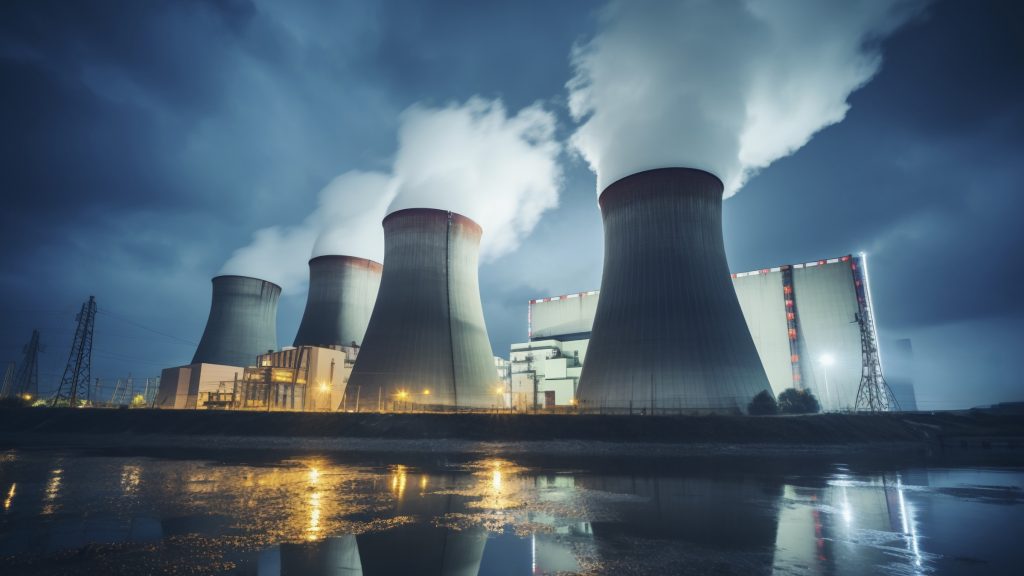
In 2024, Trey Lauderdale started his initiative “Atomic Canyon” in California to channel AI, also known as ChatGPT for nuclear power, to assist nuclear reactors in processing billions of documents quicker.
Lauderdale’s plans include speeding up the typical slow nuclear industry and helping meet the growing electricity needs of tech firms. Even if AI powers a record-breaking part in electricity use, AI and nuclear powers are more closely linked than ever.
Nuclear energy is a major energy source for data centers, but the industry’s massive amounts of paperwork and heavy processes are a challenge. Therefore, Lauderdale’s firm is at the forefront of AI software to solve these challenges, setting a new benchmark for running an AI and nuclear facility.
Potential of Nuclear Power for AI
AI has increased electricity usage across the US, following decades of mere growth. Big Tech giants like Amazon, Google, Meta, and Microsoft are fighting to gain access to constant power for their data centers. Nuclear energy and AI data centers combined offer a reliable, 24/7 power supply necessary for huge power centers.
One of the main reasons for renewed interest in nuclear power is the creation of small modular reactors (SMRs).
While traditional plants feature a single giant reactor, SMRs employ several smaller modules that can be produced in masse to lower expenses and enhance flexibility, essentially ChatGPT for nuclear reactors for power generation. Yet, no SMRs have been built in the US, but tech firms like Google have invested into deals to purchase electricity from startups developing these models.
For instance, Kairos Power, a mission-driven engineering company, plans to supply 500 megawatts by using molten fluoride salt cooled reactors.
Other firms like Oklo, backed by OpenAI CEO Sam Altman, and Saltfoss, backed by investors like Bill Gates and Peter Thiel, are attempting to market SMRs as well. Bill Gates-founded TerraPower is developing a larger reactor with a molten salt energy storage system that traps heat during low-demand times.
AI and Nuclear Power Plants
While potential is promised by new reactors, daily operations at nuclear plants remain complex and slow. On the other hand, Atomic Canyon’s founder discovered Diablo Canyon Power Plant in California was overwhelmed with nearly 2 billion pages of reports.
Lauderdale believed that AI and nuclear power plants could greatly be enhanced through smarter document management. His organization employs AI to allow engineers, technicians, and compliance officers to quickly access needed documents. Following the negotiation of a deal with Diablo Canyon during the latter part of 2024, interest in other nuclear power plants and AI increased.
“That’s when I knew, as an entrepreneur, we were at a point where we needed to raise a round of capital,” Lauderdale added, claiming that they raised $7 million led by Energy Impact Partners.
The challenge was that nuclear related terms and acronyms, like ChatGPT nuclear reactor, initially confused AI models, causing hallucinations. To improve, Lauderdale purchased 20,000 GPU hours on the supercomputer at Oak Ridge National Laboratory. Atomic Canyon uses a retrieval-augmented generation (RAG) approach to help AI with accurate responses by referencing documents directly.
Final Thoughts
Today, Atomic Canyon looks at document search because the risk level is lower.
In the future, the startup hopes to use AI to draft documents, like a ChatGPT nuclear reactor with human oversight always ensuring safety. This shows that using AI tools for nuclear technology helps transform the interaction between AI and nuclear plant operations.
“One of the reasons we’re starting generative work around the titles of documents is because getting that wrong might cause someone a little frustration. It doesn’t put anyone at risk at the plant,” Lauderdale said.
As recent studies highlighted, the integration of AI and nuclear power can significantly improve operational efficiency and predictive maintenance in nuclear facilities, reducing human error and enhancing safety protocols – a sign that such advancements pave the way for smarter, more resilient nuclear power plants powered by AI-driven decision support systems.
Inside Telecom provides you with an extensive list of content covering all aspects of the tech industry. Keep an eye on our Tech sections to stay informed and up-to-date with our daily articles